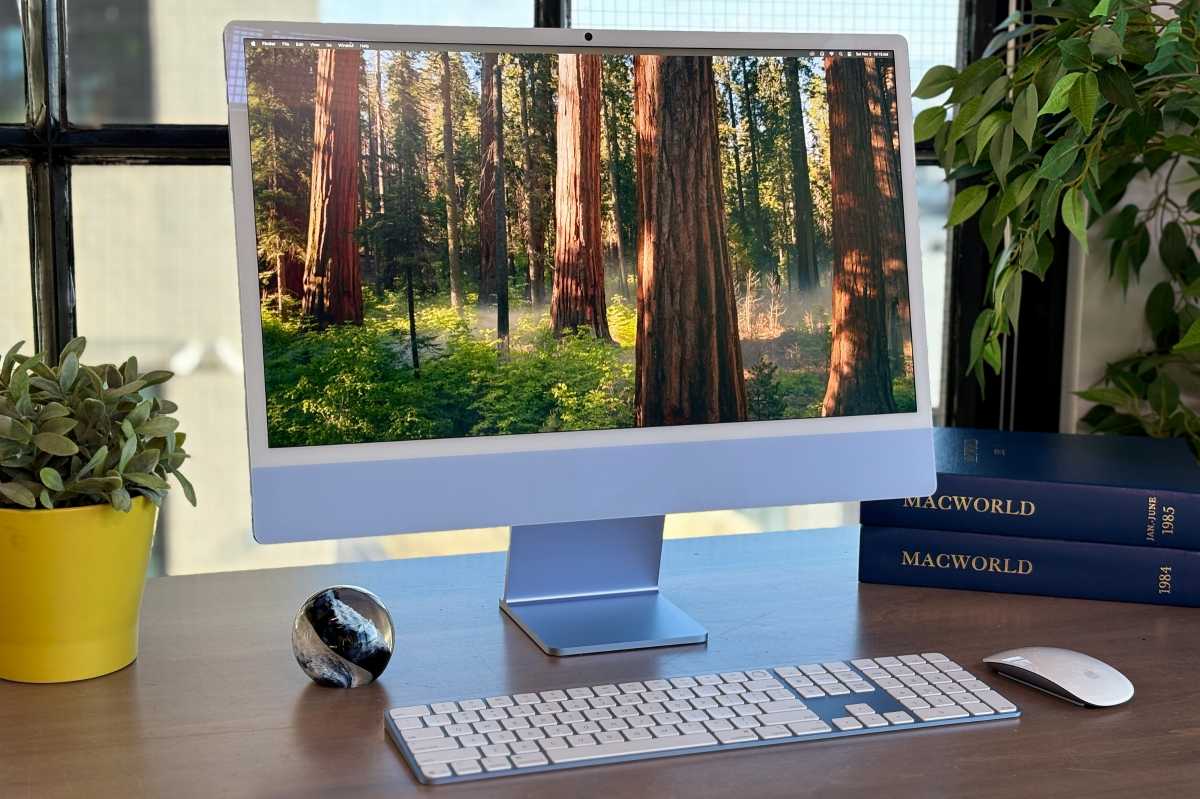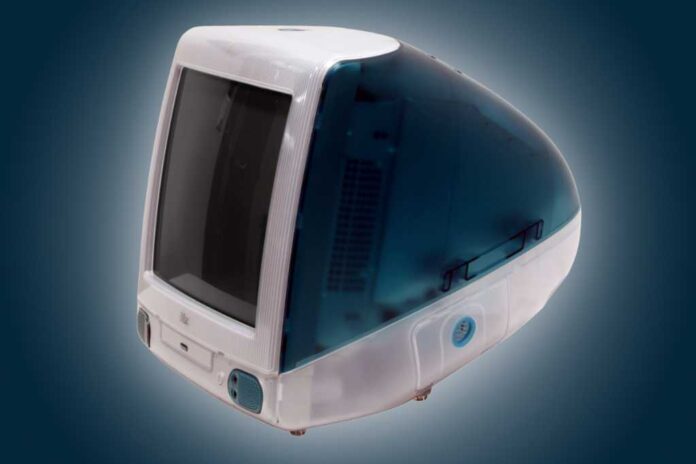Twenty-seven years in the past immediately, Steve Jobs took the stage on the Flint Heart in Cupertino to unveil the primary new product since his return to Apple: the authentic iMac.
The Apple of immediately could be practically unrecognizable to the individuals of 1998, however Apple nonetheless sells an iMac. It’s actually the one product Apple sells immediately that it additionally offered in that period. (MacBooks have been PowerBooks, and Mac Professionals have been Energy Macs again in 1998.) In fact, immediately’s iMac bears little resemblance to the unique G3 iMac. However in protecting the identify alive, Apple can also be nodding to the distinctive spirit of the iMac, a product that helped flip round Apple’s fortunes and outline the computer systems of the subsequent three a long time.
It appears so quaint and apparent now, however in 1998 the iMac was, if not revolutionary, not less than rebellious and radical. In an period of beige PCs, it was the colour of the water off Australia’s Bondi Seaside. In an period the place the common laptop was formed like a pizza field or a minitower, tethered to a CRT monitor through a fats cable, the iMac was a clear self-contained unit.
Floppy disk drive? Didn’t have one. The array of legacy ports (serial, parallel, ADB, SCSI) that had constructed up over 20 years of private computing? Gone! Totally! They have been changed with a single new connectivity specification: Common Serial Bus… yep, and we’re nonetheless utilizing USB all these years later.
A variety of these selections have been clearly made by Steve Jobs, who felt that computer systems have been being held again by a devotion to backward compatibility. And all the best way again to the authentic Mac, Jobs was dedicated to the concept an all-in-one laptop that you would choose up and transfer round, and resembled an equipment, was going to be extra interesting than a field and a monitor and a giant mess of wires.
He was proper, in a few notable methods. In fact, most computer systems offered immediately are laptops, not desktops, however they’re basically all-in-ones which you can choose up and transfer round–simply radically so. However the iMac has continued to promote properly, even on this period of laptops and tablets, and smartphones. Just a few years in the past, an iMac product supervisor advised me simply how massive the iMac enterprise nonetheless is–they reside in all kinds of areas, from lodge check-in desks to workplaces to colleges to libraries to properties, the place it makes extra sense to have a desktop laptop than a laptop computer. (If that weren’t true, Apple would haven’t any motivation to maintain the iMac going, not to mention give it the spiffy redesign it obtained as part of its transfer to Apple silicon.)
The iMac has additionally, from the very starting, been impressed by laptops. Again within the Nineteen Nineties, laptops have been all the time seen as lesser merchandise. The excessive value of miniaturizing elements and constructing flat-panel screens meant that laptops have been costly. And the low-power, transportable processors utilized in these laptops have been underpowered in comparison with desktops. So you would get a laptop computer–and lots of us did!–however they have been fairly a bit costlier and noticeably slower than desktops.

At present’s iMac nonetheless carries the identical spirit because the one which began all of it.
Foundry
I don’t need to say that Steve Jobs noticed the longer term, however he type of did. To maintain the iMac as small as potential (apart from the large CRT on the primary mannequin), it was constructed with lots of components historically discovered solely in laptops. Through the years, this course of continued. Desktop computer systems didn’t typically include flat screens, however the iMac did. And with the arrival of the G5 iMac, which built-in itself right into a show as a single unit, the iMac actually reached its ultimate kind: A display screen powered by small, laptop-inspired elements.
At present, the distinction between desktops and laptops is essentially about form, not concerning the elements inside. My MacBook Professional runs the identical chip that’s in a Mac Studio. The iMac’s chip can also be within the MacBook Air. The desktops have change into laptops, and vice versa. The iMac was a giant a part of that transition.
Lastly, I might be remiss if I didn’t contact on the iMac’s colourful vitality. That authentic aquamarine iMac was surprising within the period of beige containers and kicked off a entire craze for translucent plastic in actually every thing–from printers to George Foreman Grills. The following wave of G3 iMacs launched a number of colours, so you would choose the one which spoke to you, whether or not it was pink or inexperienced, or blue.
Apple took what it discovered there and, starting with the iPod mini, embraced a rainbow of shade choices. You’ll be able to nonetheless see it within the iPhone (although some years, it appears to not be what it as soon as was) and most notably in immediately’s iMacs, which are available in seven completely different shades.
The reality is, probably the most influential merchandise simply don’t appear so spectacular in hindsight, as a result of they actually redefined actuality. The trail of the iMac appears apparent in hindsight. Nevertheless it had a huge effect on immediately’s Mac, immediately’s Apple, and actually your entire know-how world of immediately. The iMac spirit lives on–as does the iMac itself.


